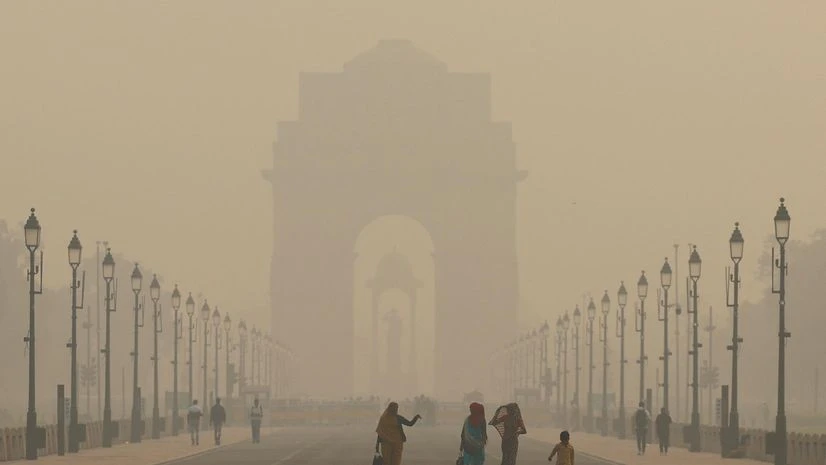Delhi’s toxic smog has forced authorities to consider 50% staff attendance, staggered office timings and expanded public transport to curb emissions.
BY PC Bureau
November 22, 2025: The Commission for Air Quality Management (CAQM) on Saturday rolled out a stricter version of the Graded Response Action Plan (GRAP), escalating anti-pollution measures across the National Capital Region as Delhi continues to choke under hazardous air. The Capital has been engulfed in a toxic haze for days, with visibility dropping, pollution-linked illnesses rising sharply, and air quality oscillating between the ‘Very Poor’ and ‘Severe’ categories.
GRAP, an emergency-response framework built on daily AQI levels and meteorological forecasts, is activated region-wide to ensure that multiple agencies work in sync during pollution surges. Formulated after years of scientific assessments, stakeholder consultations and field experience, it provides a tiered system of interventions depending on the gravity of the air-quality situation.
Under the revised plan, a significant number of measures earlier placed under Stage II have now been shifted to Stage I (‘Poor’ AQI: 201–300). These include uninterrupted power supply to curb diesel generator use, extra personnel at traffic choke points, public pollution alerts across newspapers, radio and TV, and an expansion of public transport through additional CNG/electric buses and increased metro frequency with differential fares to encourage off-peak travel. Likewise, measures once classified under Stage III have been moved up to Stage II (‘Very Poor’ AQI: 301–400), including staggered office timings in Delhi, Gurugram, Faridabad, Ghaziabad and Gautam Budh Nagar. Other NCR districts and the Central Government may adopt similar steps.
#IndiaNews #Delhi #Airpollution #NCR #DelhiPollution
🚨 Delhi AQI Crisis: GRAP 4 Measures Now Under GRAP 3 as Air Quality Remains ‘Very Poor’!
⚠️ Current Situation (Nov 22, 12:54 PM IST): Delhi AQI at 360 (‘very poor’) — CAQM implements stricter measures as air quality expected… pic.twitter.com/aEjxayI5t1
— iVyasa (@ivyasaa) November 22, 2025
With the Capital’s air still lodged in the ‘Very Poor’ zone and conditions likely to worsen due to low wind speeds and temperature inversion, CAQM has also activated a set of measures previously reserved for Stage IV (‘Severe’) within Stage III. These include allowing public, private and municipal offices to operate with only 50% staff strength on-site, with the remaining employees working from home—a step that the Delhi and NCR state governments may choose to implement. The Centre may take a parallel decision for its own workforce.
A City in Crisis: Hospitals Overflowing, Schools Disrupted
Delhi’s pollution crisis has now morphed into a full-blown public-health emergency. Hospitals are reporting a surge in children and elderly patients complaining of breathlessness, wheezing, eye irritation, throat infections, and aggravated asthma. Many schools have curtailed outdoor activities or shifted to hybrid or online modes for younger students. Construction workers, traffic police and daily commuters remain the most exposed, with doctors warning that even healthy adults are at risk during prolonged exposure.
READ: ‘Hindus Sustain the World’: Bhagwat’s Remark Ignore Manipur’s Complexity
Meanwhile, meteorologists caution that relief is unlikely in the immediate future. Stagnant winds, falling temperatures and early winter conditions are trapping pollutants close to the ground, worsening the Capital’s smog blanket. With stubble burning contributing episodically and vehicular emissions remaining the biggest local source, the situation has once again brought Delhi’s long-standing struggle with episodic winter pollution into sharp focus.
As Delhiites brace for yet another grim pollution cycle, CAQM’s stricter interventions signal an urgent attempt to slow the slide. Whether the revised GRAP will provide enough relief, however, remains uncertain as the region confronts one of its gravest air-quality phases in recent years.










